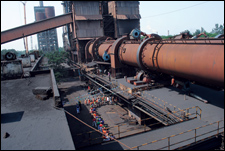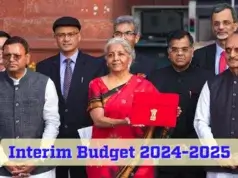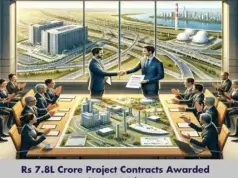 India has become a key contender in the world in terms of production, capacity utilisation, exports and consumption on the back of impressive performance of the steel industry. The phenomenal growth exhibited by the steel industry has attracted a number of global players in its fold, writes B. Satish Kumar, Managing Director, Steel Exchange India Ltd, which aims to attain one million tonne of finished steel capacity.
India has become a key contender in the world in terms of production, capacity utilisation, exports and consumption on the back of impressive performance of the steel industry. The phenomenal growth exhibited by the steel industry has attracted a number of global players in its fold, writes B. Satish Kumar, Managing Director, Steel Exchange India Ltd, which aims to attain one million tonne of finished steel capacity.
The steel industry in India plays an important role in the economic growth of the country. Steel contributes majorly in the development of traditional sectors such as real estate, automobile, transportation etc. India is the fifth largest steel producer in the world and is slated to become the second-largest producer in the near future.
The country has acquired a central position on the global steel map with its giant steel mills, acquisition of global scale capacities by players, continuous modernisation and upgradation of old plants, improving energy efficiency, and backward integration into global raw material sources. The phenomenal growth exhibited by the Indian steel industry has attracted a number of global players in its fold.
India has become a key contender in the world in terms of production, capacity utilisation, exports and consumption on the back of the impressive performance of the steel industry. The per capita consumption of steel in India is much less compared to the global average. Keeping this in mind, one of the major initiatives that need to be taken is to focus on increasing the consumption of steel in the rural regions. The potential for the growth of steel consumption in the rural areas of India for purposes like rural housing, rural infrastructure etc. is high and this needs to be tapped efficiently.
In order to realise the growth potential of the steel industry, it is also essential to ensure that the industry remains competitive. Availability of inputs is one of the most important aspects in this regard. Unavailability of sufficient inputs like coke leads to a rise in costs. Furthermore, efficient infrastructure facilities such as transportation, power etc. is of prime importance in maintaining the competitiveness of the industry.
Most developed countries have regulations that are aimed to protect the domestic steel industry. The Indian steel industry has comparatively much lesser protection through regulations. Proper regulatory measures should be adopted by the government to protect the domestic steel industry.
 A few months back, the scenario of the steel industry looked quite bleak due to a decrease in demand. Higher imports might be the reason that Indian domestic steel costs are now at import uniformity compared to a concession of roughly 3 per cent in April 2013.
A few months back, the scenario of the steel industry looked quite bleak due to a decrease in demand. Higher imports might be the reason that Indian domestic steel costs are now at import uniformity compared to a concession of roughly 3 per cent in April 2013.
Overall, the steel prices have drawn closer to 15 per cent in the past three months. Iron ore prices reduced as an outcome of entire raw material prices which cut the steel prices by approximately 2 per cent in the past three months as compared to a 15 per cent decrease in global prices. Indian prices were at a concession of 8-10 per cent to import during February 2013. At the current level, the price is in balance with the cost of trading.
India still remains hugely adequate in raw materials for iron and steel industry. It has proved to be the fifth largest hub of iron ore reserves in the world.
Huge challenges
The steel industry in India is facing huge challenges with regard to minerals and mining, land, environmental issues and infrastructural difficulties. The country does not have enough infrastructure features to export steel in terms of ports. The equation between iron ore manufacturers and mixed manufacturers is missing. The outflow of steel availability, the elevated export demand for iron ore and substitutes for steel gaining strong footholds in the metal market are also some big challenges for the industry. Relocation of prospecting and mining hires, mineral allowances, mine allotment procedure and land gaining are a matter of concern to the industry.
The rise in the demand of steel in India is anticipated to be 14 per cent due to its hardcore domestic economy, huge infrastructure requirements, development of industrial production, demand in the key industries like housing, automotive, infrastructure, packaging, construction, steel tubes and pipes, consumer durables, and ground transportation. Similarly, there is a huge demand of steel in hi-tech engineering industries such as automotive, petrochemicals, power generation, fertiliser etc.
Steel is crucial to the development of any modern economy and is considered to be the backbone of the human civilisation. Steel industry in India can endure in this competitive world only in terms of costs and quality, which is possible if the challenges are suitably attended. The production course and systems across the steel industry must be proficient for the welfare of the steel industry. If the recommended growth plans are employed as per the schedule, India has the possibility of becoming the second largest steel manufacturer in the world by 2015-16.











